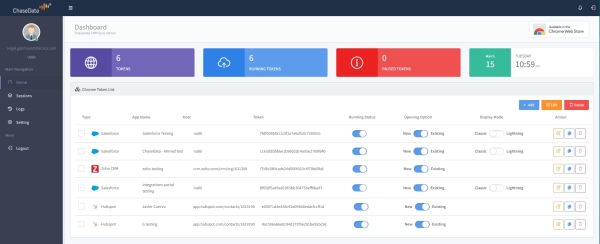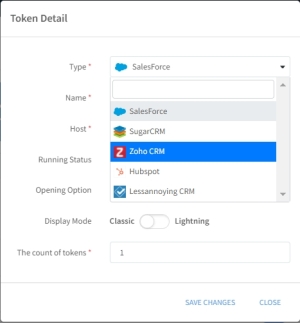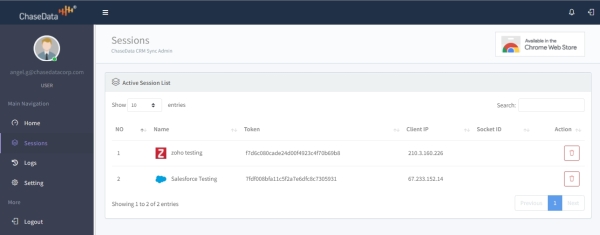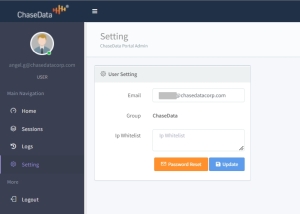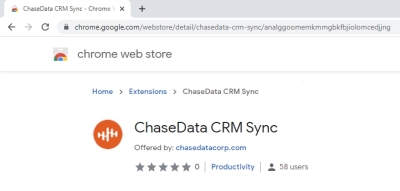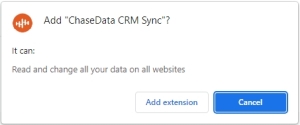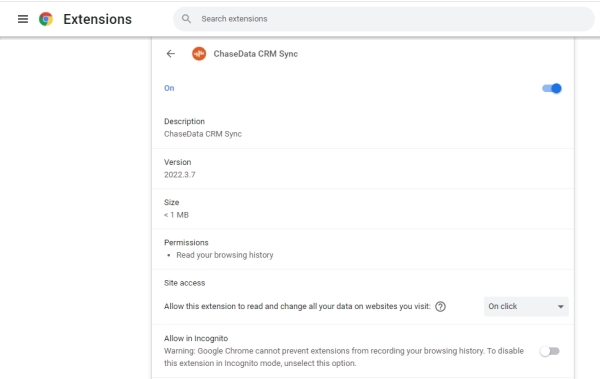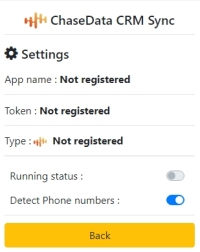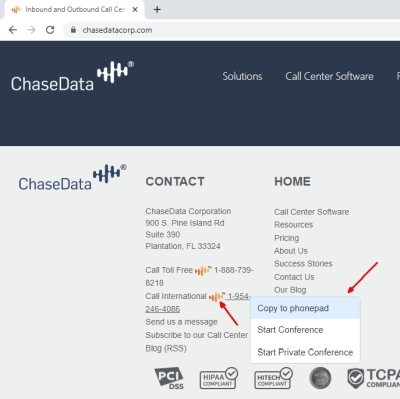Introduction
The Web Extension Portal, or ChaseData CRM Sync Admin, is a tool for administrators to setup the authorization mechanisms for agents can link to a CRM when they use the ChaseData Chrome Extension. The Chrome extension itself can be downloaded and used by the agent without a CRM link, as long as the ChaseData Agent App/Client is running -that allows the agent to perform click-to-dial, but without the CRM link to the lead.
Click-to-dial gives an agent the ability to call any phone number on the web with a single click when browsing with Chrome. In addition, if authorization is provided through ChaseData CRM Sync Admin, the contact information is pulled from the lead’s profile in the corresponding CRM, as well.
To access the Web Extension Portal, you need to request the appropriate link and credentials from your admin or DialedIn representative.

